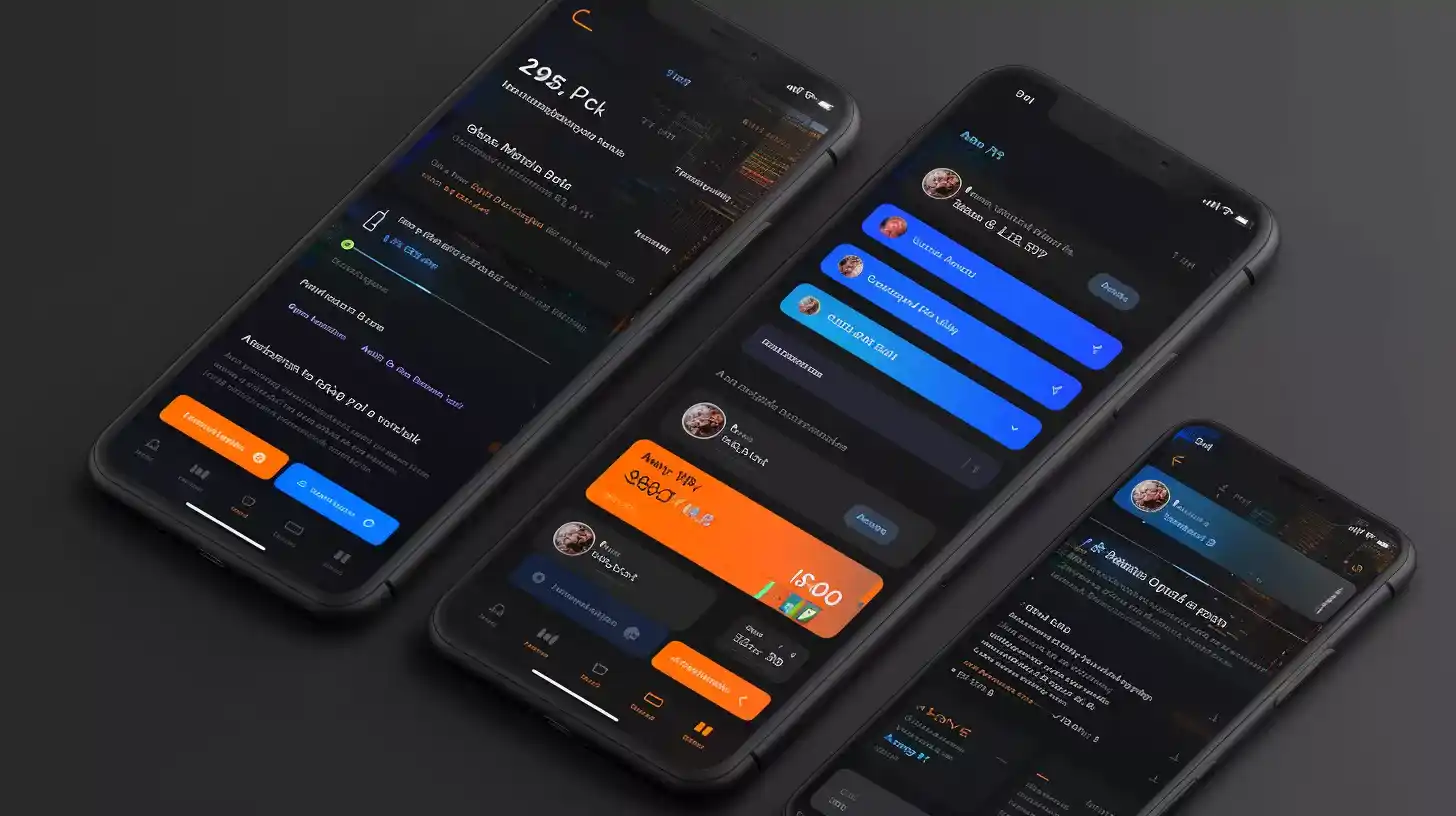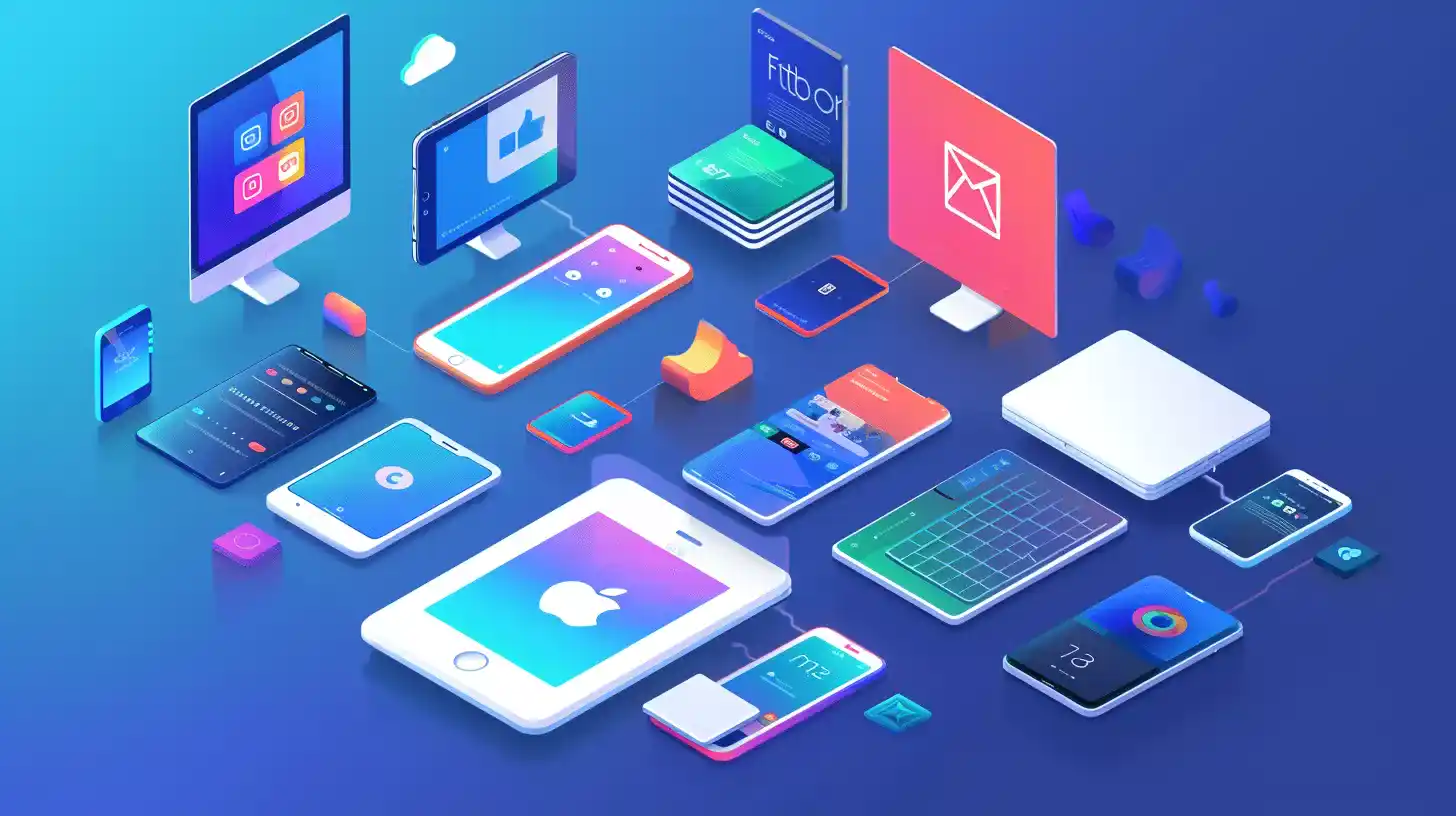Table of Contents
What is Flutter?
Google created Flutter, an open-source user interface software development kit. It allows you to create applications for Android, iOS, Linux, Mac, Windows, Google Fuchsia, and the web using a single codebase.
Introduced by Google in 2017 and officially released in December 2018, Flutter has quickly become a favorite among developers for building beautiful, natively compiled applications. It’s not just a framework; it’s a complete SDK – providing everything you need to create high-quality apps.
Key features and benefits
Flutter’s key features include its fast development cycles, expressive and flexible UI, native performance, and a wide range of widgets. One of its standout benefits is the ‘hot reload’ feature that allows developers to see code changes right away in the app. It also provides access to a rich set of fully customizable widgets that help in creating native interfaces in minutes.
How it Transforms the App Development Process
Flutter transforms the app development process by unifying the development environment. With this, there’s no need to write platform-specific code to achieve a native look and feel. This not only speeds up the development process but also reduces the complexity and cost of app production.
Leveraging a single language (Dart) and a reactive framework allows for more dynamic and faster app development. This efficiency gains favor with both developers and businesses looking to push their apps to market quickly.
Getting Started
Embarking on your Flutter journey begins with setting up the right environment. It’s a straightforward process that paves the way for seamless app development.
Installing and Configuring Your Development Environment
First things first, you’ll need to download the Flutter SDK from the official website. Once you’ve got that, extract the zip file to the desired location on your disk. To ensure its commands are available globally, add Flutter to your path. After that, run `flutter doctor` in your terminal or command prompt to check if there are any dependencies you need to install to complete the setup.
Understanding the Dart Programming Language
Dart is the programming language used by Flutter. It’s an object-oriented language that is easy to learn if you’re familiar with Java or JavaScript. Dart focuses on front-end development, so you’ll find it has many similarities to JavaScript in terms of syntax and structure.
Exploring the Development Tools and IDE Options
Flutter is versatile when it comes to development tools. You can use Android Studio, IntelliJ IDEA, or Visual Studio Code with Flutter and Dart plugins installed. These IDEs provide a rich set of tools that make coding, debugging, and running your applications straightforward. With these tools at your disposal, you can focus on what matters most: creating a fantastic app.
Flutter Basics
Diving into Flutter, you’ll quickly realize that everything is a widget. Widgets are the fundamental building blocks of an app’s user interface.
Widgets and the Widget Tree
Each widget represents an immutable component of the user interface. Widgets form a hierarchy based on composition. This hierarchy is called the widget tree, which you can think of as a blueprint for your UI, defining the structure and layout.
Building the User Interface with Widgets
Creating a UI in Flutter involves combining different widgets. You have widgets for structure, like Row and Column, widgets for layout, like Padding and Align, and widgets that serve as controls, like Button and Slider. By using these widgets, you can create complex and beautiful designs.
Working with Layouts and Responsive Design
Flutter’s responsive design is built into its framework. Using layout widgets like Flexible and Expanded, you can create UIs that adapt to different screen sizes effortlessly. The key is understanding how to manage widget properties to respond to changes in screen dimensions, ensuring your app looks great on any device.
Flutter Development Workflow

The workflow is designed to be simple yet powerful, allowing you to focus on crafting exceptional apps.
Creating a New Project
Starting a new project is as easy as running flutter create project_name in your terminal. This command sets up a basic project structure with all the necessary files and folders to get you going.
Structuring Your App
A well-structured app is crucial for maintainability and scalability. You typically organize your code into directories based on functionality. For instance, you might have folders for screens, widgets, models, and services. This helps keep your codebase clean and your app architecture clear.
Managing State in Apps
State management is an essential component of any application. You have several options for managing the state, such as using setState, Provider, or more advanced state management solutions like Riverpod or Bloc. The choice depends on the complexity of your app and your personal preference. Each method has its way of triggering UI updates when the app’s state changes.
UI Design

Flutter’s UI design capabilities are robust, offering flexibility and control over the look and feel of your app.
Customizing Widgets
Customization is at the heart of its design philosophy. Almost every widget can be tailored to meet your design vision. You can adjust properties like color, size, and padding, or go deeper by creating your custom widgets.
Implementing Material Design and Cupertino UI
It comes with a rich set of pre-designed widgets that follow Material Design (for Android) and Cupertino (for iOS) guidelines. These widgets help you achieve platform-specific aesthetics with minimal effort while maintaining the app’s performance.
Working with Themes and Styles
Themes are a powerful way to maintain a consistent look throughout your app. By defining a ThemeData object at the root of your app, you can specify colors, fonts, and widget styles that ripple down through the widget tree. This not only saves time but also ensures consistency as your app grows.
Networking and Data

Networking and data management are crucial for most modern apps, and it provides a comprehensive set of tools to handle these tasks efficiently.
Fetching Data from APIs
Flutter simplifies the process of fetching data from APIs with the http package. You can make GET, POST, PUT, and DELETE requests to retrieve or send data to servers. Asynchronous programming with Future and async/await patterns ensures that your UI remains responsive while waiting for data.
Handling Local and Remote Data
Managing data in Flutter is straightforward whether it’s stored locally or remotely. For local storage, you have options like SharedPreferences for simple data or using the sqflite package for more complex database operations. For remote data, you can use state management solutions to ensure that your UI reflects the latest data without unnecessary rebuilds.
Integrating Databases and Storage
When it comes to integrating databases and storage solutions, it offers flexibility. You can connect to a variety of databases like Firebase, SQLite, or even NoSQL databases like MongoDB. For file storage, cloud solutions like Firebase Storage provide a seamless experience for storing and retrieving user-generated content.
Testing and Debugging
Testing and debugging are essential for delivering a stable and reliable app. It provides a comprehensive suite of tools to help you test and debug your applications effectively.
Unit Testing Flutter Components
Unit tests are a developer’s primary line of defense against bugs. You can write unit tests for your widgets and classes to ensure they work as expected. The flutter_test package provides all the tools you need to write comprehensive unit tests for your components.
Integration Testing Across the App
Integration tests check whether different parts of your app work together as intended. With Flutter’s integration_test package, you can simulate user interactions and verify that your app’s functionality is intact across different scenarios.
Debugging Apps with DevTools
Flutter’s DevTools is a powerful suite of debugging tools that help you diagnose and fix issues quickly. You can inspect the widget tree, view app logs, and monitor performance in real-time. DevTools also offers features like hot reload and hot restart to speed up your development workflow.
Deploying Flutter Apps
The last phase in the app development process is deployment. It streamlines this process, whether you’re targeting iOS or Android.
Building for iOS and Android Platforms
Flutter allows you to build your app for both iOS and Android with a single command. Use flutter build ios to create an iOS build and flutter build apk or flutter build appbundle for Android. These commands generate everything you need to distribute your app on their respective platforms.
Submitting to App Stores
Once you have your build, it’s time to submit your app to the Apple App Store or Google Play Store. Ensure you’ve tested your app thoroughly and have all the necessary metadata, such as app descriptions, icons, and screenshots. Then, use the respective platform’s tools (App Store Connect for iOS and Google Play Console for Android) to upload your build and submit it for review.
Continuous Integration and Deployment
For a more streamlined process, consider setting up Continuous Integration and Deployment (CI/CD). Tools like Codemagic or GitHub Actions can automate your testing and deployment workflows. With CI/CD, every code commit can be automatically built, tested, and prepared for release, reducing manual effort and the potential for human error.
Beyond Mobile: w Versatility
Flutter’s capabilities extend far beyond mobile apps, opening up a world of possibilities across various platforms.
Building Web Apps
Flutter for the Web is a game-changer. It allows you to use the same codebase to deploy your app to browsers. With commands like flutter build web, you can compile your Dart code into JavaScript and HTML, ready to be hosted on any web server.
Creating Desktop Applications
Flutter’s desktop support enables you to create apps for Windows, macOS, and Linux. This means you can take your mobile app and bring it to desktop platforms with minimal changes to the code. The ability to reach more users on their preferred devices is a significant advantage.
Exploring Embedded Systems and IoT
Flutter’s versatility shines in the realm of embedded systems and IoT. With its lightweight framework and customizable widgets, you can build interfaces for smart devices, home automation systems, and more. Its performance and flexibility make it an excellent choice for developers looking to innovate in the IoT space.
Conclusion
As we wrap up our exploration of Flutter, it’s clear that this framework is a powerhouse for app development.
Flutter’s widget-centric approach, rich set of pre-designed widgets, and powerful tools for UI design, state management, and testing make it an excellent choice for developers. Its ability to deploy to mobile, web, desktop, and even embedded systems demonstrates its versatility.
For those eager to dive deeper into Flutter, resources abound. The official Flutter documentation is a great starting point. Community forums like Stack Overflow, Reddit, and GitHub are invaluable for learning from and engaging with fellow developers.
The future of Flutter looks bright. With its growing community and continuous updates from Google, it is poised to remain a top choice for developers looking to build high-quality, cross-platform apps efficiently. As technology evolves, so too will Flutter, adapting to meet the needs of tomorrow’s apps.





